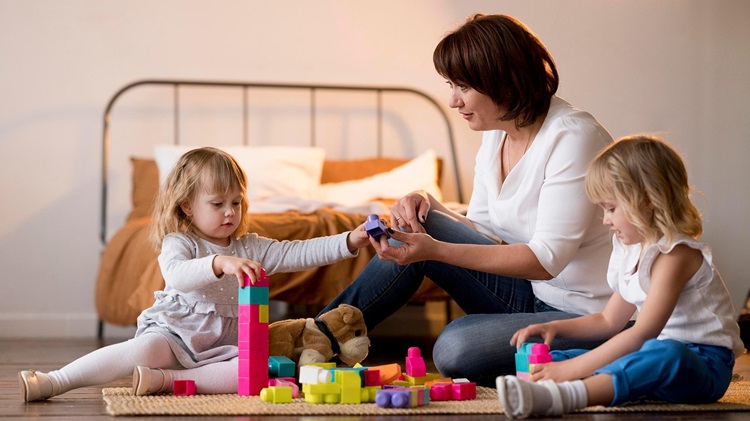Itchy Vagina: The Top Causes And Treatment

Data records 1 out of every 10 women experiences regular and incessant vaginal itching at some point of time. India alone had 9,17,960 google searches on ‘itchy vagina’ in the year 2021.
Hence, the condition is serious, common, and yet very less talked about. This article details nine of the most common causes of vaginal itching, vaginal itch relief, and recovery.
Chemical Irritants
Cause
The vagina is a comparatively much more sensitive and delicate area. Exposing it to chemicals such as soaps, scents, creams, ointments, and topical contraceptives can potentially disturb its natural pH balance. This then brings an advertent burning sensation and incessant itching, sometimes also triggering urinary tract infection (UTI).
Treatment
In case you have been using any of the artificial vaginal washes, feminine sprays, or scented products, and hence face an incessant itch, discontinue the product at the earliest and switch to plain water. Post cleansing, gently pat dry, and wear cotton underwear. Also, refrain from any sexual intercourse for a minimum of 3-5 days.
Recovery
The itch should normalize naturally in 2- 3 days and the vagina should switch to its normal pH. In case the irritation persists, consult a gynecologist immediately. It may be because of a varying underlying cause and require immediate medical attention.
Vaginal Yeast Infection
Cause
Vaginal Yeast Infection is one of the most common vaginal infections and affects 3 out of every 4 women once in their lifetime. This is especially common as a woman first turns to regular sexual life or intakes a regular dose of antibiotics.
Some common symptoms include intense itching, redness, foul smell, and a white rubbery discharge. Medically, we see this as an imbalance of good and bad bacteria.
Typically, a small amount of yeast naturally occurs in the vaginal walls. However, at times, if the good and bad bacteria imbalances in the body, the naturally present yeasts may grow inadvertently. This overgrowth then triggers vaginal yeast infection.
Treatment
Yeast Infection is typically treated with imidazole medicines such as clotrimazole and miconazole. They can be taken both- orally or topically. At times, it is also paired with antifungal medications such as fluconazole or ibrexafungerp for a prescription period of 1-7 days. As you take your medicines, refrain from any sexual intercourse for a minimum of 3 days or as suggested by your doctor.
Recovery
The yeast infection typically takes 3-7 days to recover. And as you heal, we suggest, you use only plain water to cleanse through and gently pat dry. This would quicken the recovery and negate any parallel infections.
While the itching should simmer within 3-4 days of medicine, in case it persists, consult a gynecologist immediately. It may be because of a varying underlying cause and require immediate medical assistance.
Bacterial Vaginal Infection or Bacterial vaginosis (BV)
Cause
Bacterial Vaginal Infection, in the simplest sense, is an imbalance between the naturally occurring good and bad bacteria in the vagina. The overgrowth of anaerobes (bad bacteria) triggers an intense vaginal itching, thin watery discharge, and a foul, fish-like smell. It also increases the vaginal pH to more than 4.5 and causes redness, swelling, and a burning sensation as one passes urine.
Treatment
The infection can be easily treated with antibiotics like metronidazole, clindamycin, tinidazole, or secnidazole. These can be taken both- orally and topically and show results within 5-7 days. However, do not take these medicines by yourself. A bacterial vaginal infection is very much similar to a yeast infection in symptoms. Therefore, your doctor is the best person to help you diagnose the exact cause of your vaginal discomfort and guide you through the right medication.
Recovery
The bacterial infection typically takes 5-7 days to recover. And as you heal, we suggest, you use only plain water to cleanse through your vagina and gently pat dry. This would keep you away from any parallel infections and fasten the recovery. As additional care, you could also include some homegrown curd and yogurt to balance anaerobes with curd’s natural lactobacilli.
As you recover, avoid drinking alcohol and having sexual intercourse for a minimum of 3 days. Both could trigger infections and cause nausea.
While the itching should simmer within 3-4 days of medicine, in case it persists, consult a gynecologist immediately. It may be because of a varying underlying cause and require immediate medical assistance.
If bacterial vaginal infection happens while you are pregnant, consult your OBGYN at the earliest. It could risk premature delivery and low birth weight.
Call Now to Book a Free Appointment with our female OB-Gynecologist in your City.
Hormonal Changes
Cause
As a woman ages, so does her vagina. And it is only natural for her hormones to fluctuate and vaginal tissues to become thin and dry due to lack of estrogen. Typically, in a healthy vagina, the vaginal walls stay lubricated through a thin, clear layer of liquid. The female hormone estrogen helps maintain the fluid and keeps the wall thick and elastic. However, with age and hormone fluctuations, the vaginal cells become old and dead. This triggers unwanted itching, bad hygiene and at times- urinary leakage.
This is extremely common among women in their 20s and 30s or post child birth.
Treatment
Vaginal Itching caused due to hormonal fluctuations or aging is best treated through Laser Vaginal Rejuvenation (LVR). The procedure is quick, simple, bloodless and requires no anesthesia or downtime. The process uses a small laser probe to gently deliver laser energy to your vaginal tissue. This in turn increases natural blood flow and stimulates collagen. Thereby, adding new cell growth, vaginal toning, lubrication, and good health.
Recovery
LVR as treatment requires no downtime or bed rest. However, depending on your individual vaginal health, your doctor may prescribe you 2-3 or 3-5 sessions. Each is performed at a minimum break of 15-20 days. Hence, ranging from anywhere between 2-3 months.






